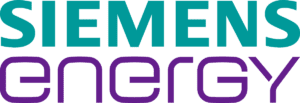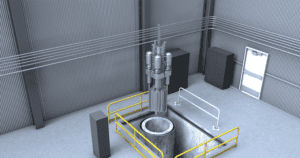
Transforming the whole energy system is a monumental and hugely complex challenge. Balancing sustainability with reliability and affordability to foster energy resilience is difficult enough—and the transition is made tougher by a wide range of factors.
With global energy demand on the rise, operators are regularly confronted with new legal requirements, regional developments, and geopolitical changes. These uncertainties are part of everyday business—and require flexible, practical solutions.
Experience from international projects shows that the different areas of the energy system are becoming increasingly interconnected. This creates opportunities for a long-term resilient energy supply—for example, through the combination of hybrid plants and automated substations, which are already in use in several countries.

At Enlit Europe 2025, Siemens Energy will be exhibiting and presenting smart solutions to support energy resilience and showcase the benefits of the integrated control system Omnivise T3000.
Join them and explore the portfolio.
Integrated controls—your bridge into the future!
The energy landscape is changing. Operators face the challenge of monitoring and controlling a diverse fleet while energy production needs to be stable and reliable. The need for integration is driven by market volatility, the rapid pace of the energy transition, and a shortage of subject matter experts.
Siemens Energy’s integrated control solutions enable monitoring and operation—all from one central control room. This centralization is not just about convenience; it’s about enhancing plant flexibility and responsiveness.
The Omnivise T3000 control system exemplifies this approach. It offers a unified platform that brings together asset management, system monitoring, and operational control. The result is a system that supports your plant’s entire lifecycle. With Omnivise T3000, operators can adapt, optimize, and innovate without being locked into siloed systems or proprietary protocols.
What are key topics to consider for energy transition?
Cybersecurity – A non-negotiable foundation:
Global cybercrime costs—including data damage, operational disruptions, investigations, legal expenses, and regulatory fines—were estimated to reach an astounding $9.5 trillion in 2024. In response, regulators continue to tighten regulations, e.g., American NERC CIP or European NIS, increasing complexity and costs even as plants become more connected—and therefore more exposed.
Cybersecurity is the front line of the energy transition. Keeping up with tightening compliance and the lack of OT security knowledge can be difficult. But operators can’t afford to treat Cybersecurity as an afterthought or a box-ticking exercise. The risks are real, and the solutions must be equally robust and certified.
Siemens Energy knows that Cybersecurity needs to be considered at the very beginning. Building on a holistic approach that is secure-by-design: cybersecurity is embedded throughout the system architecture of Omnivise T3000, not bolted on as an afterthought. This means every part is engineered to withstand external attacks and fully comply with standards and regulations.
Flexibility – A core requirement:
The operational focus in power generation is shifting from single assets to complex environments. Energy trading, demand fluctuations, and renewable integration require dynamic responses across diverse assets.
Integrated control solutions for hybrid plants, such as Siemens Energy’s Omnivise Hybrid Control (OHC), cut through today’s energy complexity by seamlessly integrating diverse sources to deliver reliable, efficient, and clean power. OHC provides a comprehensive control solution allowing operators to manage hybrid plants secure and most effectively.
Full Automation Integration – Key to grid stability:
Substations and Synchronous Condensers are the critical link between generation assets and the grid, bridging the gap between power production and distribution. Automation at this level enables real-time control of key assets, allowing for rapid response to grid disturbances and efficient integration of renewables.
Omnivise T3000 integrates controls and substation automation in one system, reducing complexity and increasing reliability. Key features include plug-and-play connection of any protection device, built-in cybersecurity, high usability, and simplified engineering.
The system is designed from the ground up to interface seamlessly with third-party systems, including protection systems. This interoperability is essential for efficient engineering and future-proof investments. The focus is on enabling operators to manage their substations as part of a holistic, digitalized grid, rather than as isolated assets.
Driving the digitalized and resilient energy future
Siemens Energy strengthens infrastructure with intelligent assets and advanced monitoring. By enhancing protection, control, and cybersecurity, Siemens Energy safeguards grid operations and accelerates the transition to sustainability—including climate-neutral operations by 2030.
Siemens Energy plays a crucial role in securing and optimizing generation infrastructure, supporting decarbonization through modernization, hydrogen integration, and carbon capture. Integrated control systems and substation automation enable flexible, centralized operation and robust cybersecurity, meeting the highest industry standards.
Delivering energy resilience at every step—from the first spark of generation to the final mile of distribution. Siemens Energy shares the vision of a future where energy systems are not only smarter and safer, but also cleaner and more connected.
Some steps are small. Other steps are large, and we take them together, in collaboration.
Join Siemens Energy at Enlit Europe 2025, November 18-20, in Bilbao, Spain, at the Bilbao Exhibition Centre, Hall 3, Booth C10. As a gold and innovation partner, Siemens Energy will showcase its role in transforming the energy landscape through presentations and networking opportunities.
Learn more: Omnivise T3000 webpage
Download our white papers:










